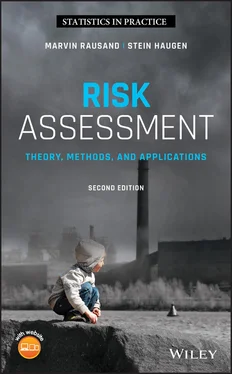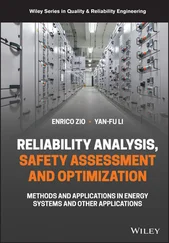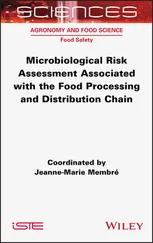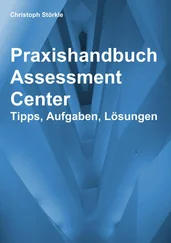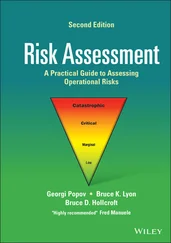8 5.8 The precautionary principle is one possible approach to managing risk, particularly aimed at technology and developments that are new and where we do not necessarily know what the risk is. An example of a new technology is autonomous cars and other transport systems. What may the effect be on this type of new technology if we apply the precautionary principle in a strict sense?
9 5.9 Is GAMAB a useful principle for expressing what is acceptable risk if we introduce a completely new technology, e.g. autonomous transport systems? Are we willing to accept the same risk for a new system as an existing one? Find examples where this is not the case.
10 5.10 Consider a system development process and assume that you have identified a particular risk factor. Further, assume that you, based on an evaluation, decide to leave the risk factor as it is without implementing any risk reduction measure. Have you then, in fact, accepted the risk factor?
11 5.11 A new pesticide is proposed, based on a new and unproven mix of chemicals. Discuss the risk related to the introduction of this new pesticide in light of the precautionary principle. Formulate a set of questions to be answered before the pesticide is accepted for use.
12 5.12 List the main strengths and weaknesses of the GAMAB principle.
13 5.13 A company applies the following acceptance criterion for acute pollution events: If no traces or effects of the pollution can be observed five years after the pollution event, it is acceptable. Discuss this principle for acute pollution to the sea (e.g. oil spill).
14 5.14 A hazardous fluid needs to be transported through a densely populated area on a regular basis. Identify factors that need to be considered to decide whether the risk related to this transport is acceptable.
1 Ale, B.J.M. (2005). Tolerable or acceptable: a comparison of risk regulation in the United Kingdom and in the Netherlands. Risk Analysis 25: 231–241.
2 Ashenfelter, O. (2005). Measuring value of a statistical life: Problems and prospects, Working paper 505. Princeton, NJ: Princeton University.
3 Aven, T. (2007). On the ethical justification for the use of risk acceptance criteria. Risk Analysis 27: 303–312.
4 Aven, T. and Vinnem, J.E. (2005). On the use of risk acceptance criteria in the offshore oil and gas industry. Reliability Engineering & System Safety 90: 15–24.
5 Bottelberghs, P.H. (2000). Risk analysis and safety policy developments in the Netherlands. Journal of Hazardous Materials 71: 59–84.
6 Cameron, R.F. and Willers, A. (2001). Use of risk assessment in the nuclear industry with specific reference to the Australian situation. Reliability Engineering & System Safety 74: 275–282.
7 CCPS (2009). Guidelines for Developing Quantitative Safety Risk Criteria. Hoboken, NJ: Wiley and Center for Chemical Process Safety, American Institute of Chemical Engineers.
8 CNCS (2009). Guidance on the use of deterministic and probabilistic criteria in decision‐making for class I nuclear facilities, Draft RD‐152. Ottawa, Canada: Canadian Nuclear Safety Commission.
9 Court of Appeal (1949). Edwards vs national coal board.
10 EN 50126 (1999). Railway Applications: The Specification and Demonstration of Reliability, Availability, Maintainability and Safety (RAMS). Brussels: European Norm.
11 EU (2000). Communication from the commission on the precautionary principle, Communication. Brussels: Commission of the European Communities.
12 EU (2001). Directive 2001/18/EC of the European Parliament and of the Council of 12th March 2001 on the deliberate release into the environment of genetically modified organisms.
13 EU (2016). Directive (EU) 2016/798 of the European Parliament and of the Council of 11 May 2106 on railway safety.
14 Fischhoff, B., Lichtenstein, S., and Keeney, R.L. (1981). Acceptable Risk. Cambridge: Cambridge University Press.
15 Garnett, K. and Parsons, D. (2017). Multi‐case review of the application of the precautionary principle in European Union law and case law. Risk Analysis 37 (3): 502–516.
16 HSE (1992). The Tolerability of Risk from Nuclear Power Stations. London: HMSO.
17 HSE (2001). Reducing Risks, Protecting People; HSE's Decision‐Making Process. Norwich: HMSO.
18 Johansen, I.L. (2010). Foundations and Fallacies of Risk Acceptance Criteria. ROSS report 201001. Trondheim, Norway: Norwegian University of Science and Technology.
19 Klinke, A. and Renn, O. (2002). A new approach to risk evaluation and management: risk‐based, precaution‐based, and discourse‐based strategies. Risk Analysis 22 (6), 1071–1094.
20 Nordland, O. (2001). When is risk acceptable? Presentations at 19th International System Safety Conference, Huntsville, AL.
21 NS 5814 (2008). Requirements for Risk Assessment, Norwegian edn. Oslo, Norway: Standard Norge.
22 NSW (2011). Risk Criteria for Land Use Safety Planning: Hazardous Industry Planning Advisory Paper No. 4. Technical report. Sydney, Australia: New South Wales, Department of Planning. ISBN: 978‐0‐73475‐872‐9.
23 Pandey, M.D. and Nathwani, J.S. (2004). Life quality index for the estimation of societal willingness‐to‐pay for safety. Structural Safety 26: 181–199.
24 Royal Society (1992). Risk: Analysis, Perception and Management. London: Report of a Royal Society study group, Royal Society.
25 Schäbe, H. (2001). Different approaches for determination of tolerable hazard rates. In: Towards a Safer World (ESREL'01) (ed. E. Zio, M. Demichela, and N. Piccinini). Turin, Italy: Politechico di Torino.
26 UN (1992). Report of the United Nations Conference on Environment and Development, Rio Declaration on Environment and Development. Tech. Rep. A/CONF.151/26/Rev. 1 (Vol. 1). New York: United Nations.
1 1 https://www.eea.europa.eu/help/glossary/gemet-environmental-thesaurus.
Конец ознакомительного фрагмента.
Текст предоставлен ООО «ЛитРес».
Прочитайте эту книгу целиком, на ЛитРес.
Безопасно оплатить книгу можно банковской картой Visa, MasterCard, Maestro, со счета мобильного телефона, с платежного терминала, в салоне МТС или Связной, через PayPal, WebMoney, Яндекс.Деньги, QIWI Кошелек, бонусными картами или другим удобным Вам способом.
